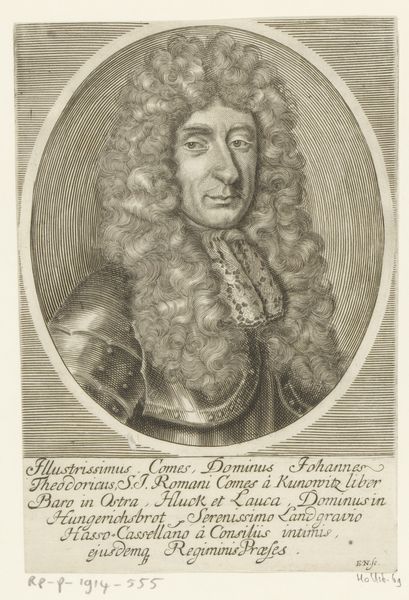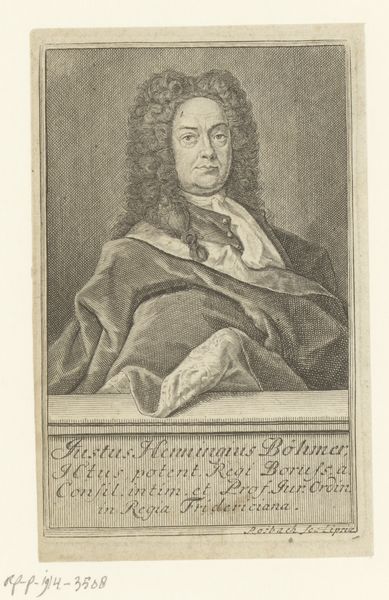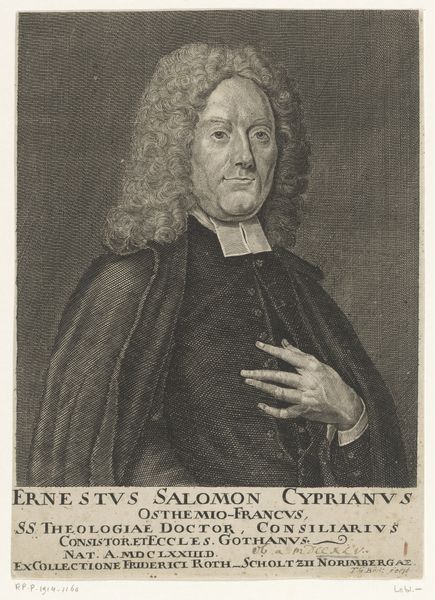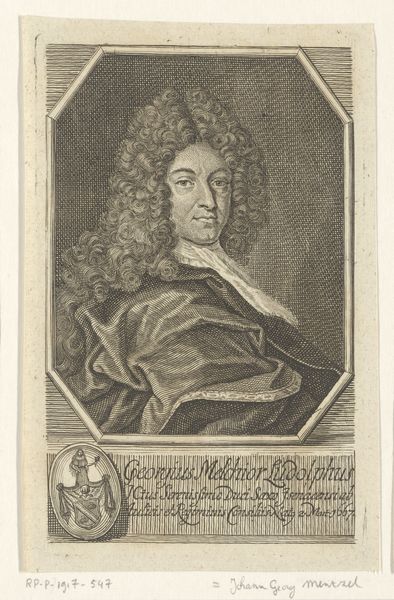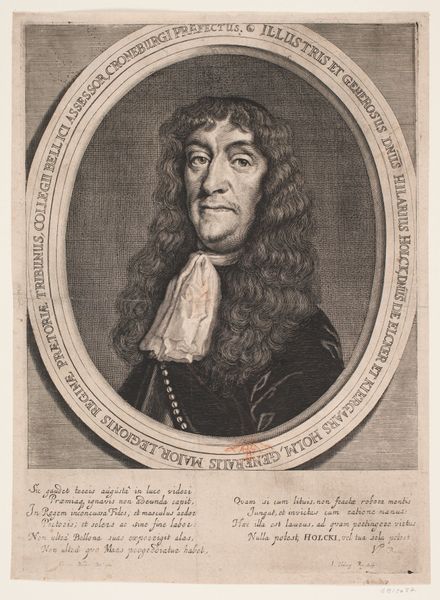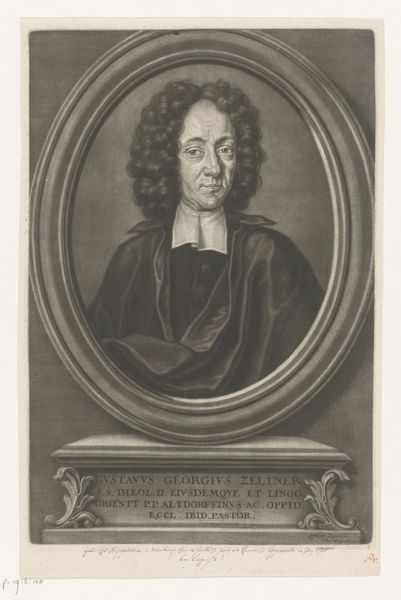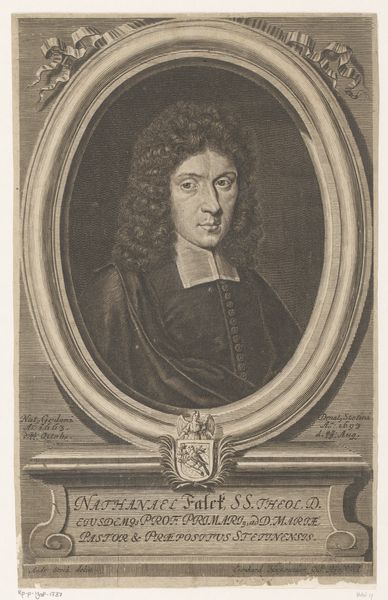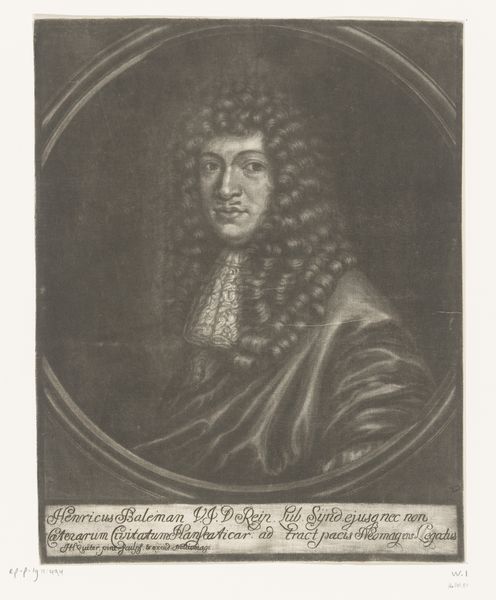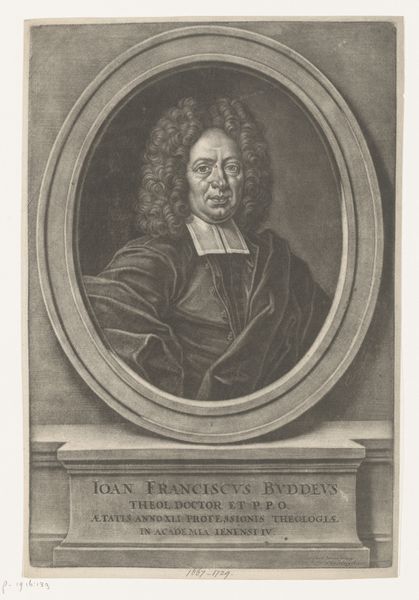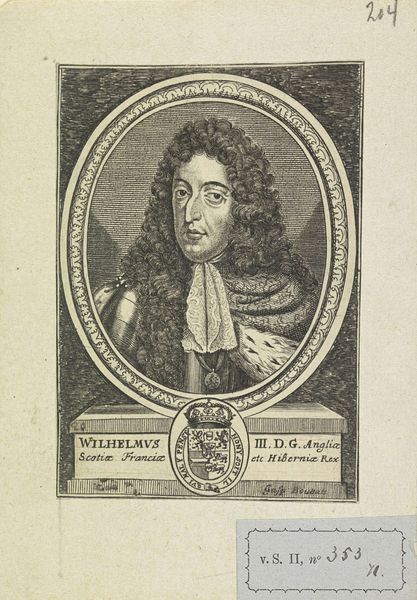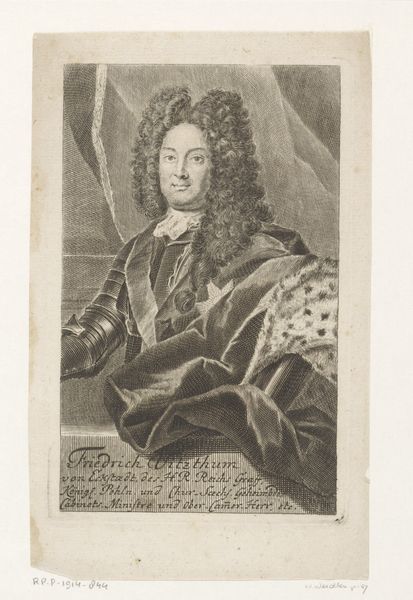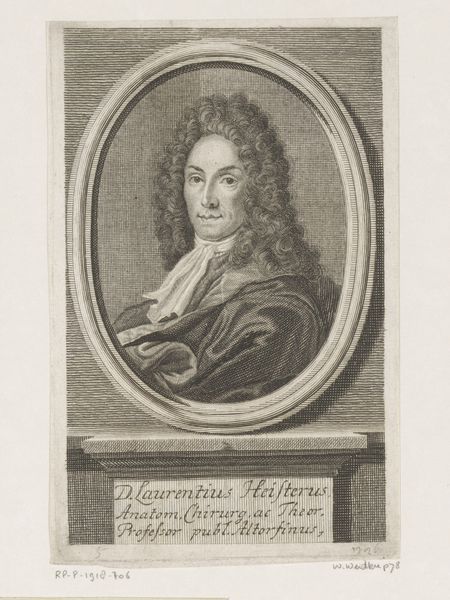
engraving
#
portrait
#
baroque
#
old engraving style
#
historical photography
#
history-painting
#
engraving
Dimensions: height 146 mm, width 98 mm
Copyright: Rijks Museum: Open Domain
Editor: Here we have Johann Friedrich Schmidt's "Portret van Quirinus Kuhlmann," an engraving dating sometime between 1704 and 1765. It’s currently held in the Rijksmuseum. The stark contrasts and the formal pose give it a somber feel, don't you think? What strikes you about this piece? Curator: Indeed! It's impossible to view this without pondering Kuhlmann's dramatic end. "Fanaticus fui temporis doctrina… in Moscovia combustus," it says beneath his image – he was burned in Moscow for his beliefs! Doesn’t that knowledge transform the way you see the seemingly stoic face staring back at you? Editor: Absolutely. I hadn't focused on the inscription at first. So, knowing his fate, does the artist give us any clues to his character? Curator: Perhaps. Look at the intensity in his gaze, even within the limitations of the engraving technique. Consider too, the very deliberate, almost fussy, baroque style... a bit much for a man ultimately martyred, wouldn’t you say? It speaks to the complexities inherent in portraying someone, especially knowing how history would later define him. Does the visual echo of importance mitigate his future? Does it attempt to write the story as something other than a tragic end? What a riddle this portrait proposes. Editor: It definitely does make me consider the power of image making. It also shows how essential context is when you view a work of art. Curator: Precisely! Art isn’t created in a vacuum. It's a fascinating dance between artist, subject, and, crucially, the ever-shifting sands of time and interpretation.
Comments
No comments
Be the first to comment and join the conversation on the ultimate creative platform.
